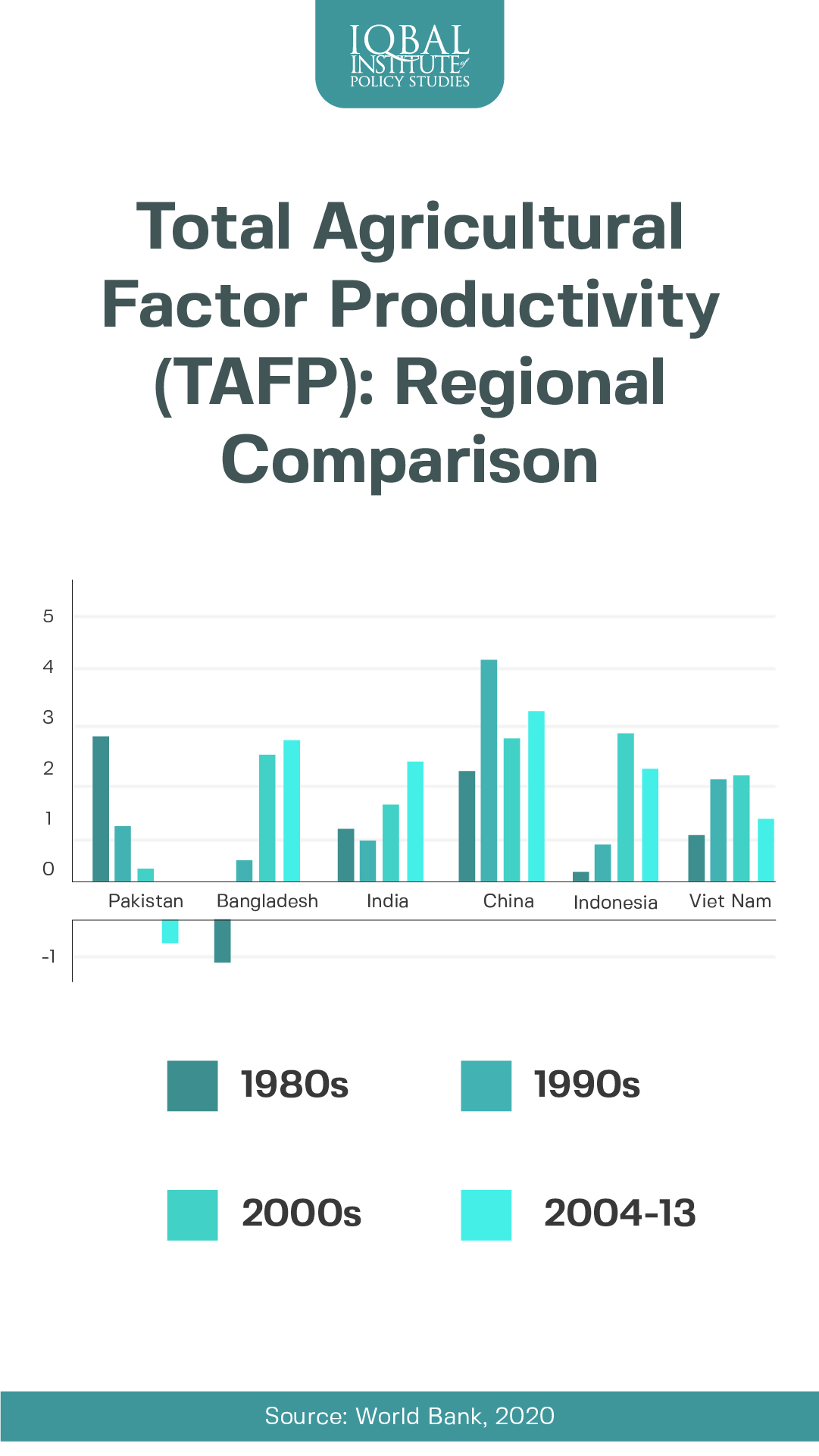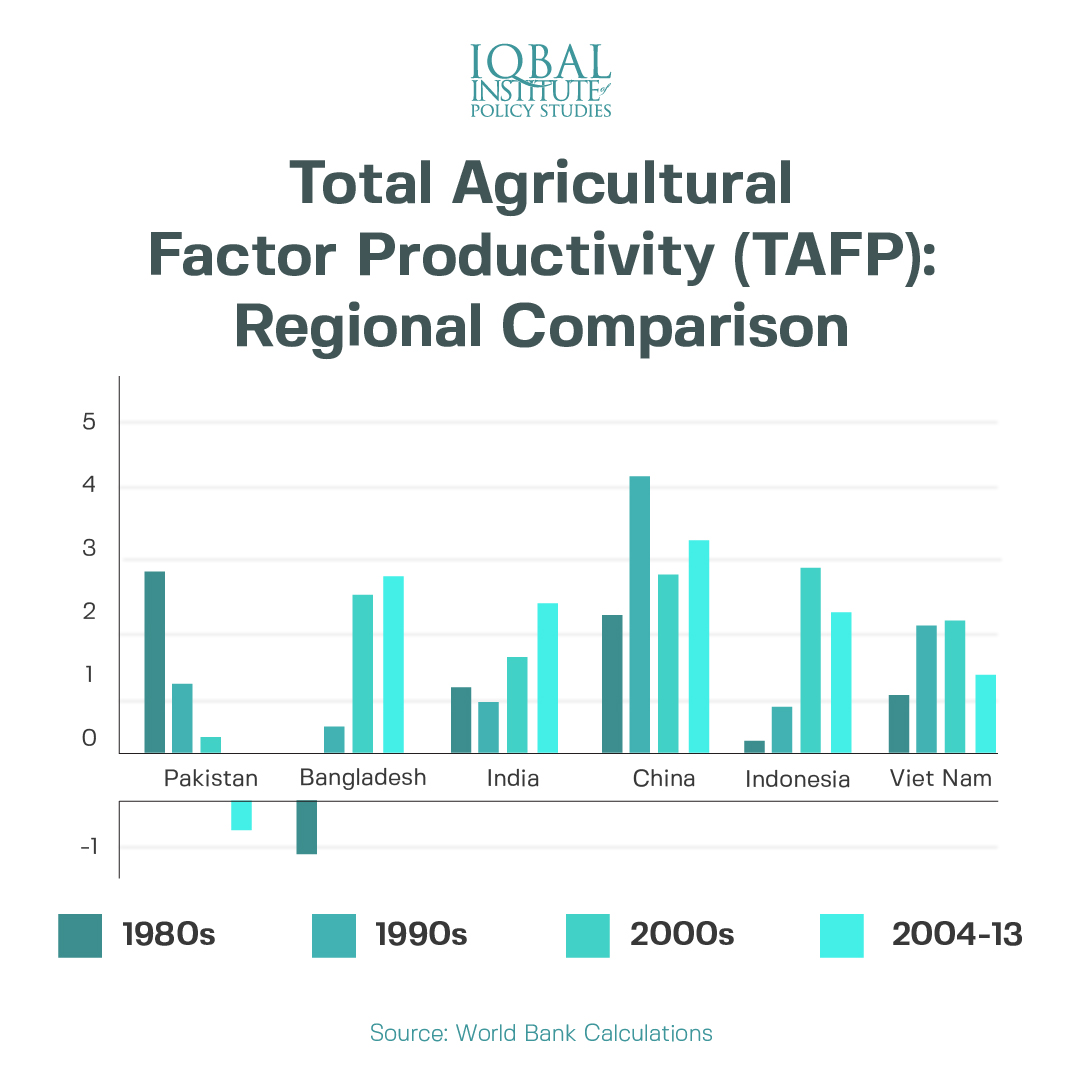
Total Agricultural Factor Productivity is an indicator of how efficiently agricultural land, labour, capital, and other materials like fertilizers and pesticides, are used to produce agricultural output. TAFP is calculated as the ratio of total agricultural output to total input. One possible explanation of Pakistan’s stagnant agricultural sector is the slowing down of TFP growth in the sector.
In the developed countries of the world, the shift from agricultural and farm to non-farm activities was facilitated by increasing agricultural productivity. An increased TFP meant that the agricultural sector was able to produce more crops with less labour. This also meant the availability of more labour for non-agricultural sectors.
A comparison of Pakistan’s TAFP with South Asian neighbours shows that despite significant growth in the 1980s and 1990s, the sector has not been able to increase its TAFP and it has declined in the last decade. Countries like Bangladesh and Vietnam, which started with less TAFP in the 1980s ended up achieving growth multiple times more than Pakistan’s agricultural sector.


Leave a Reply